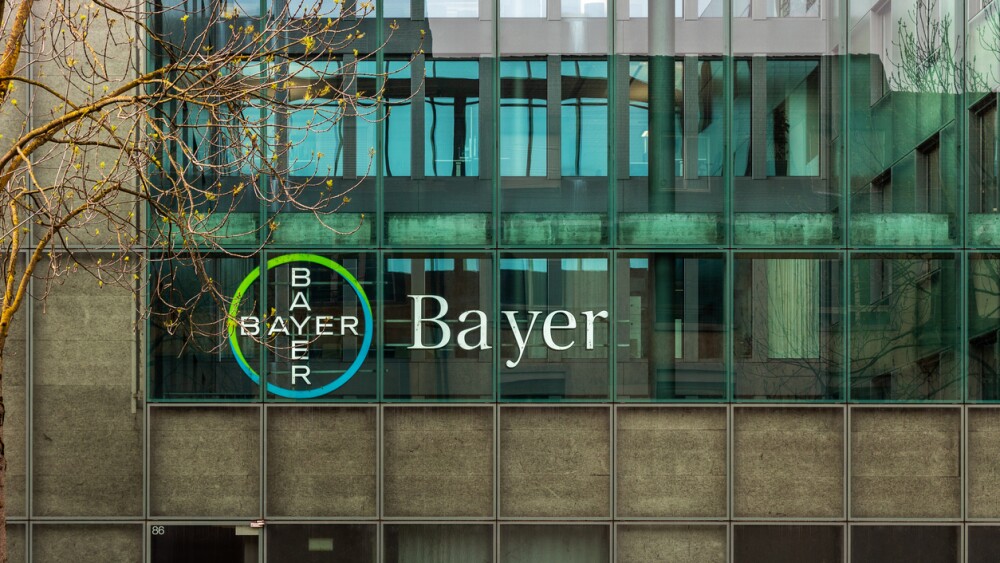Approval is based on KEYNOTE-689 Phase III Clinical Trial Results
KIRKLAND, QC, Aug. 13, 2025 /CNW/ -- Merck (NYSE: MRK), known as MSD outside of the United States and Canada, announced today that Health Canada has granted approval for KEYTRUDA® (pembrolizumab), Merck's anti-PD-1 therapy, for the treatment of adult patients with resectable locally advanced head and neck squamous cell carcinoma (HNSCC) whose tumours express PD-L1 (Combined Positive Score [CPS] ≥ 1), as determined by a validated test, as neoadjuvant treatment as monotherapy, continued as adjuvant treatment in combination with radiotherapy (RT) with or without cisplatin and then as monotherapy.
The approval is based on data from the Phase 3 KEYNOTE-689 trial, which demonstrated positive clinical outcomes in patients with resectable locally advanced HNSCC whose tumours expressed PD-L1 (CPS ≥ 1). Perioperative KEYTRUDA® in combination with adjuvant radiotherapy with or without cisplatin reduced the risk of event free survival (EFS) by 30% (Hazard Ration [HR]=0.70 [95% Confidence Interval [CI]: 0.55–0.89; p=0.0014]) compared to adjuvant radiotherapy with or without cisplatin.
"We know that head and neck squamous cell carcinomas present significant treatment challenges because of their complexity," said André Galarneau, PhD, Executive Director & Vice President, Oncology Business Unit at Merck Canada. "The introduction of a perioperative anti-PD-1 treatment option for eligible patients in Canada represents an important development with the potential to make a meaningful difference for patients and their families impacted by this disease."
About KEYNOTE-689
KEYNOTE-689 is a randomized, multicenter, open label, active-controlled Phase III trial (ClinicalTrials.gov, NCT03765918) evaluating pembrolizumab in patients with resectable locally advanced (Stage III-IVA) head and neck squamous cell carcinoma (HNSCC).
Randomization was stratified by primary tumour site (oropharynx/oral cavity vs. larynx vs. hypopharynx), tumour stage (III vs. IVA) and PD-L1 status (Tumour Proportion Score [TPS] ≥ 50% vs TPS < 50%).
The study enrolled 714 patients who were randomized (1:1) to receive one of two treatment arms:
- Neoadjuvant pembrolizumab 200 mg for 2 cycles every 3 weeks prior to surgical resection. Within 6 weeks following surgery, pembrolizumab 200 mg for 3 cycles in combination with either radiation + 3 cycles of cisplatin 100 mg/m2 every 3 weeks for patients with high-risk pathological features after surgery or radiation alone for patients without high-risk pathological features after surgery. This was followed by pembrolizumab 200 mg every 3 weeks for up to 12 cycles.
- No neoadjuvant treatment prior to surgery. Within 6 weeks following surgery, either radiation + 3 cycles of cisplatin 100 mg/m2 every 3 weeks for patients with high-risk pathological features after surgery or radiation alone for patients without high-risk pathological features after surgery.
High-risk pathological features included the presence of positive margins or extranodal extension following surgical resection.
Treatment with pembrolizumab continued until completion of the treatment (17 cycles), disease progression that precluded definitive surgery, disease recurrence in the adjuvant phase, disease progression for those who did not undergo surgery or had incomplete resection and entered the adjuvant phase, or unacceptable toxicity.
Assessment of tumour status was performed prior to surgery at Week 6 in the neoadjuvant phase. Following the start of the adjuvant phase, assessment of tumour status was performed 12 weeks after the end of RT ± cisplatin treatment and then every 3 months until the end of Year 3; then every 6 months thereafter up to the end of Year 5.
The primary efficacy outcome measure was event-free survival (EFS) by Blinded Independent Central Review (BICR) defined as the time from randomization to the first occurrence of any of the following events: progression of disease that precludes definitive surgery, local or distant disease progression or recurrence, or death due to any cause. Secondary primary malignancy was not considered an event. An additional efficacy outcome measure was overall survival (OS).
Among the CPS ≥1 population, at the time of the first pre-specified interim analysis, the EFS HR was 0.70 (95% CI, 0.55-0.89; p=0.00140) and the number of events was 128 (37%) in the pembrolizumab arm versus 156 (47%) in the RT +/- cisplatin arm. The median EFS was 59.7 months (95% CI, 37.9-not reached) versus 29.6 months (95% CI, 19.5-41.9), in the pembrolizumab and RT +/- cisplatin arms respectively.
The most common treatment-related adverse events for patients treated with pembrolizumab in KEYNOTE-689 (reported in at least 20% of patients) were radiation skin injury and stomatitis. The most common Grade 3-5 treatment-related adverse events (reported in at least 5% of patients) were stomatitis (11.6%), lymphocyte count decreased (5.5%), and neutrophil count decreased (5.3%).
For complete information, refer to the KEYTRUDA® product monograph.
About head and neck cancer
Head and neck cancer are comprised of a group of cancers that develop in or around the mouth, nose, throat, sinuses, larynx or voice box and saliva glands. In Canada, it was estimated that there were approximately 8,100 new cases of head and neck cancer diagnosed and more than 2,100 deaths from the disease in 2024. Most head and neck cancers begin in the squamous cells that line the mucosal surfaces such as the mouth, throat and voice box. There are several factors that greatly increase the risk of developing head and neck cancer, including tobacco and alcohol use, human papillomavirus (HPV), occupation exposure to certain substances, genetic history and pool oral hygiene.
About KEYTRUDA®
KEYTRUDA® is an anti-programmed death receptor-1 (anti-PD-1) therapy that works by helping increase the ability of the body's immune system to help detect and fight tumour cells. KEYTRUDA® is a humanized monoclonal antibody that blocks the interaction between PD-1 and its ligands, PD-L1 and PD-L2, thereby activating T lymphocytes which may affect both tumour cells and healthy cells.
KEYTRUDA® was first approved in Canada in 2015 and currently has indications in several disease areas, including advanced renal cell carcinoma, bladder cancer, non-small cell lung carcinoma, primary mediastinal B-cell lymphoma, classical Hodgkin lymphoma, colorectal cancer, endometrial carcinoma, cervical cancer, esophageal cancer, triple-negative breast cancer, melanoma, and head and neck squamous cell carcinoma.
About Merck
At Merck, known as MSD outside of the United States and Canada, we are unified around our purpose: We use the power of leading-edge science to save and improve lives around the world. For more than 130 years, we have brought hope to humanity through the development of important medicines and vaccines. We aspire to be the premier research-intensive biopharmaceutical company in the world – and today, we are at the forefront of research to deliver innovative health solutions that advance the prevention and treatment of diseases in people and animals. We foster a diverse and inclusive global workforce and operate responsibly every day to enable a safe, sustainable, and healthy future for all people and communities. For more information about our operations in Canada, visit www.merck.ca and connect with us on LinkedIn @MerckCanada.
Forward-Looking Statement of Merck & Co., Inc., Rahway, N.J., USA
This news release of Merck & Co., Inc., Rahway, N.J., USA (the "company") includes "forward-looking statements" within the meaning of the safe harbor provisions of the U.S. Private Securities Litigation Reform Act of 1995. These statements are based upon the current beliefs and expectations of the company's management and are subject to significant risks and uncertainties. There can be no guarantees with respect to pipeline candidates that the candidates will receive the necessary regulatory approvals or that they will prove to be commercially successful. If underlying assumptions prove inaccurate or risks or uncertainties materialize, actual results may differ materially from those set forth in the forward-looking statements.
Risks and uncertainties include but are not limited to, general industry conditions and competition; general economic factors, including interest rate and currency exchange rate fluctuations; the impact of pharmaceutical industry regulation and health care legislation in the United States and internationally; global trends toward health care cost containment; technological advances, new products and patents attained by competitors; challenges inherent in new product development, including obtaining regulatory approval; the company's ability to accurately predict future market conditions; manufacturing difficulties or delays; financial instability of international economies and sovereign risk; dependence on the effectiveness of the company's patents and other protections for innovative products; and the exposure to litigation, including patent litigation, and/or regulatory actions.
The company undertakes no obligation to publicly update any forward-looking statement, whether as a result of new information, future events or otherwise. Additional factors that could cause results to differ materially from those described in the forward-looking statements can be found in the company's Annual Report on Form 10-K for the year ended December 31, 2023 and the company's other filings with the Securities and Exchange Commission (SEC) available at the SEC's Internet site (www.sec.gov).
® Merck Sharp & Dohme LLC. Used under license.
© 2025 Merck & Co., Inc., Rahway, NJ, USA and its affiliates. All rights reserved.
CA-NON-04264
Media Contacts:
Merck Canada Media Relations
1-833-906-3725
mediacanada@merck.com
SOURCE Merck






